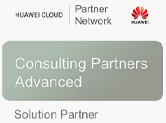Implementation and Post-Implementation
Prosolutions’ implementation services are based on best practices that have evolved over many projects
Implementation
Implementation will include on-site installation, preparation and delivery of end user support and training material, and deployment into the production environment.
Upon engagement, ProSolutions will work with you, the Client, to produce a plan that details the steps and time frames required to implement your enterprise application integration solution.
The Six Phases to Implementation
1. Requirements:
In conjunction with the client we perform an analysis to understand the existing IT application landscape and architecture, along with the various interface mechanisms available to each application. We then discuss performance, thresholds, and technical requirements.
We identify the required i-Con components, discuss infrastructure requirements, and come up with a project implementation plan.
Once in agreement we move onto the design phase.
2. Design
We design the system architecture to deploy the i-Con platform, as well as a blueprint for the i-Con interfaces based on the Client’s specific business requirements. We create a test plan with defined test samples that are incorporated into the test harness . Once the client has signed off on this, we move onto the development phase.
The i-Con Test Harness was born over time when we kept finding ourselves waiting for systems to become available. These systems would be the Provider of information that the Consumer required. As the Broker we had the power to control where the messages were sent, as well as the content of the messages.
Eventually it made more and more sense that ProSolutions Integration offered a product that could be used to shorten the project test cycles. By applying the test harness during the Development (Dev) and End-To-End (ETE) environments, we have found that the test cycles in a System Integration Testing (SIT) environment are more efficient and tend to be a lot shorter.
3. Development
In this phase we create any custom components needed to address all specified requirements. We create the event processes and integration flows based on ProSolutions best practise. We also document and test all event processes.
4. Testing
We perform functionality and load testing on all event processes. We implement the testing harness.
5. Going Live
We run User Acceptance Tests (UAT) and train the users. The project is signed off, and we are almost done.
6. Maintenance
At ProSolutions we don’t believe that a project is finished just because we have handed it over and it has gone live. During this final, but ongoing phase of a project, we provide maintenance and support services for the deployed event processes. We continue to design, test and deploy enhancements to existing event processes as well as designing, testing and deploying new event processes to meet new requirements. We provide ongoing monitoring of services as well as quarterly optimisations and audits/reviews of event processes.
Note that the i-Con Test Harness is used for integration testing to shorten the testing cycles normally encountered when Provider systems are not available during the DEV and ETE stages of a project.
Post-Implementation Services
Training
ProSolutions delivers i-Con training and certification to interface developers, administrators, and support staff. While these courses have structured content to provide the most effective knowledge transfer possible, they are also customisable to suit the customer and their specific requirements.
Development
The training delivered to the client during the implementation process will ensure that the development of all interfaces identified can be undertaken in-house. However, ProSolutions is well positioned to assist the client should additional development resource be required. The services offered can range from individual consultants through to fixed price delivery on defined pieces of work.
Support Services
Ongoing support is provided under the annual maintenance agreement. A Service Level Agreement (SLA) will be entered into with the client, detailing support available for the application environment, as well as outlining additional services that can be delivered around training, further roll out etc.


